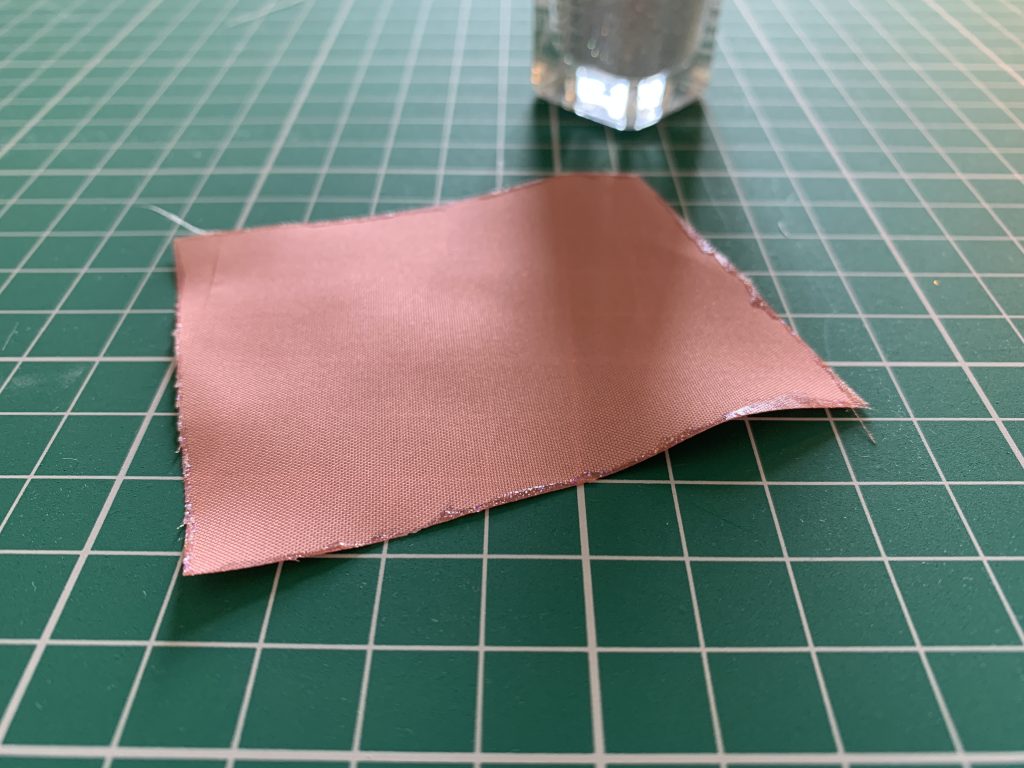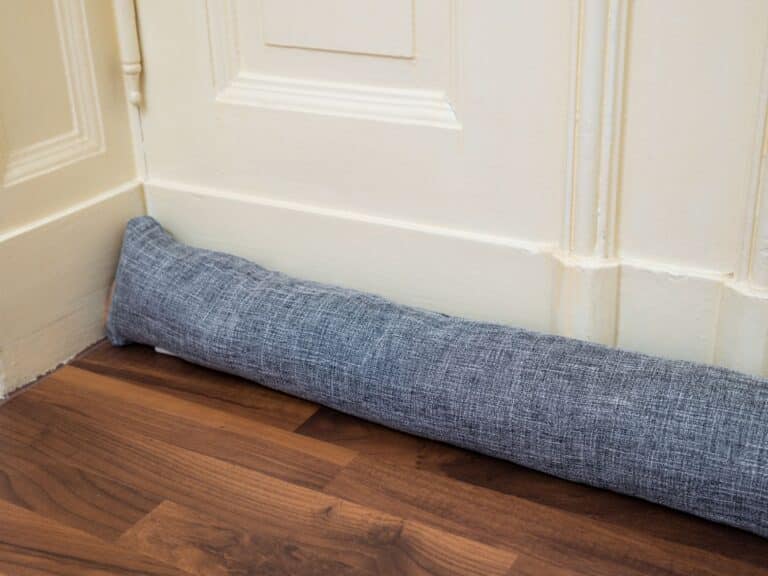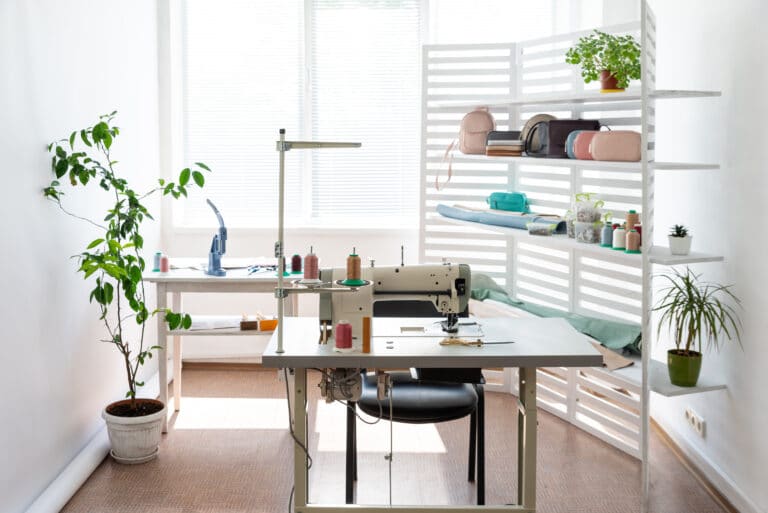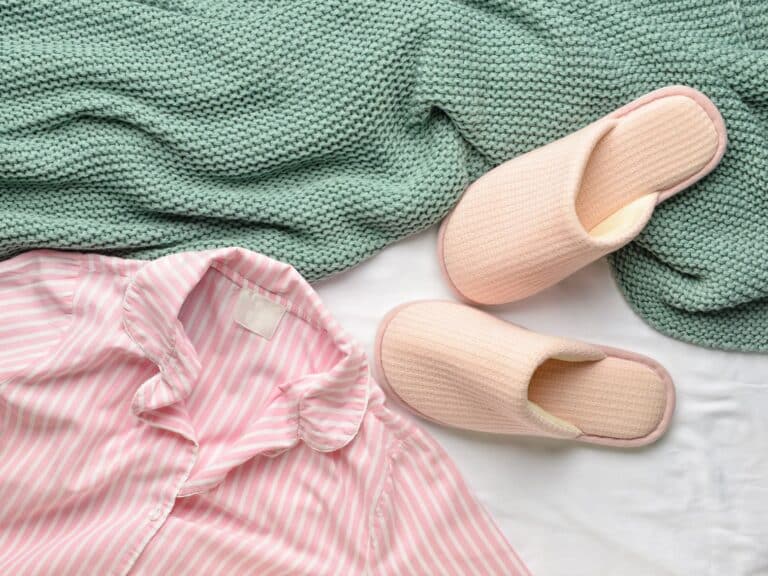How To Stop Fabric From Fraying
Some of the links below are affiliate links. As an Amazon Associate I earn from qualifying purchases. This means that, at zero cost to you, I will earn an affiliate commission if you click through the link and finalize a purchase.
There are a number of fabrics that look and feel great but unfortunately have a tendency to unravel and fray. Working with such fabrics can be a bit frustrating but it doesn’t have to be. I have asked in the past how to stop fabric from fraying and I have been given some really useful ways.
But what happens if you can use a sewing machine or an overlocker to stop the fraying? Here is everything you need to know about how to stop fabric from fraying.
What Is Fraying?
Fraying is what happens to a fabric edge, it is the weave of the fabric slowly unravelling. The very edges of the fabric are come apart from the main body and are coming away. This will eventually work its way to a seam or shrink the fabric item itself.
Fraying can be caused by a loose weave of the fabric, friction from the use or can come away and loose from age.
There are two different ways in which you can stop fabric from fraying. These are a sewn finish or a no sew finish. The different types can often depend on the fabric and the purpose of the project.
What Is A Sew Fabric Finish?
First I wanted to clear up what a sewn finish is. A sewn finish is often done on an overlocker or sewing machine. This is the binding on the edge of fabric with thread.
This is most commonly use in clothing, homewares and general sewing. It is mostly used for fabrics that are woven and are thicker, stronger or going to be washed frequently.

A sewn finish can also include another material which encases the raw edge to stop fraying. The edge of the fabric is put through the machine/ overlocker to bind the edge to stop the fabric from fraying.
When To Use A Sew Fabric Finish?
There are plenty of times you can use a sewn fabric finish. Most common uses are on clothing as the friction of movement often makes fabrics unravel and fray.
If you feel your fabric is going to fray for whatever reason you can used a sewn finish. This can be on any style of fabric, though if you are using a sheer fabric I wouldn’t use this technique.
It can often look bulky, a little messy or untidy especially for clothing. You can work on using a hidden seam or french seam if you would prefer to use a sewn finish over a non sewn finish.
What Is A No Sew Fabric Finish?
A no sew fabric finish is when a piece of fabric isn’t hemmed or bound by sewing. The fabric is naturally left but has an alternative way of finishing the edge.
This can be a number of techniques to create a no sew hem. This can include burning the edge, gluing the edge or folding in the edge.

A sew fabric finish includes thread and a sewing machine, something like a zig zag stitch, overlocker or a folded hem sewn into place. These are all examples of a sew fabric finish.
When To Use A No Sew Fabric Finish?
The best times to use a no sew fabric finish is with a particularly tricky fabric which is hard to sew, hard to create a neat seam or is delicate.
I wouldn’t advise using these techniques for clothing or garment making as the edge will come into too much friction and will probably still fray.
The best options are when using difficult fabrics, homeware projects or small areas.
How To Stop Fabric From Fraying
There are a number of ways in which you can stop fabric from fraying. Fraying is common with fabrics and can often occur in items that are well used, worn or older.

To stop a piece of fabric from fraying you can work on a few different techniques. There are ways you can stop the fabric from fraying with a sewing machine and without.
Sewn Finish
A sewn finish can often be better for finish products, garments to make them last longer, wash better and generally be in better condition. These are the best ways on how to keep raw fabric edges from fraying.
Overlocked Edge
An overlocked edge or a serger stitch is done on an overlocker/serger. This passes the raw fabric edge through the machine, trimming and then binding the edge in a complex stitch.
This stitch is commonly used with a variety of fabrics and mostly for clothing. This is the easiest and most effective way to stop fabric from fraying. It works on many different materials and even stretchy materials.
Zig-Zag Stitch
A zig-zag stitch is similar to the overlocker/serger but much simpler. This can be done on any standard sewing machine and works well. It can take a little trying to get it even and look tidy but can be done.

The stitch is to be used on the raw edge to catch the very end of the woven fabric. This will then create a wrap over the edge which will help stop the fabric from fraying.
Overcast Stitch
An overcast stitch is often said to be like a zig zag stitch with more structure and stability. The downsize to the overcast stitch is that you need to have a special foot called the overcast foot.

The stitch creates triangles that fold over the edge of the fabric and does a simple straight stitch at the bottom of the triangle. It can also be very decorative on fabrics and often used on felt projects as a decorative edging.
French Seam
A french seam is popular in clothing, it is an intense seam in which you encase the original seam in another seam. This creates a neat edge on the outside and a neat edge on the inside.

All while keeping the fabric from fraying. This is most popular on lightweight, delicate and sheer fabrics. Encasing the seam is one of the best ways on how to keep raw fabric edges from fraying.
Bias Tape
Bias tape or bias binding can be a really great way to stop a fabric edge from fraying. It is a fabric that has been folded which then folds around the fabric edge to create a neat case.

This can be used on a variety of projects. The only downside is that the casing can often be bulky and get in the way.
No Sew Finish
A no sew finish is an edging you can use on fabrics that doesn’t involve a sewing machine or sewing. These are the most popular ways to stop fabric from fraying without using a sewing machine.
Nail Polish
Nail polish is a great handy quick tool to use to stop fabric from fraying for a quick fix or to help neaten an edge. This fraying technique is used on fabrics that are harder to create a smooth and neat sewn finish.

You need to gently run the clear nail polish brush along the edge of the fabric enough to coat the fabric but not so much that it creates a clump or bulk.
Burning Edges ( Synthetic Fabrics Only)
This technique will only work on synthetic fabrics as it melts the fibres. Any other fabrics would set on fire and unfortunately be lost and ruined. Burning the edges can be very useful for trim edges, plastic boning and edge no longer than 1 inch long.
To use this technique try out a test piece on your chosen fabric over a sink to check the item is 100% synthetic before moving onto your read piece.

As you work on the real piece work over the sink so you can drop the fabric if you need to or use the water. If you have a larger edge to cover, break it up into smaller chunks and do them one bit at a time.
Use a candlelighter/stove lighter preferably as you have a proper handle where your hand is away from the flame. This gives you added security that you aren’t catching your fingers or anything else loose.
Fabric Pinking Sheers
Pinking sheers are simple a pair of scissors but the blades are crocodile tooth. Similar to the different patterned scissors you can get for children.
Pinking sheers are a staple item for many beginners and more advanced sewers due to the versatility and usefulness. I got my first pair for university and found they were great for cutting up samples to save in my sketchbook.

I wouldn’t suggest using this method on dressmaking/ clothing as you wear the item it can still create friction to cause the material to fray.
Also washing and ironing can provoke the fabric to fray leaving the seams vulnerable. You can use this method for one time wear items and more household items that don’t need a visible seam.
Iron On Adhesive Hem Tape
This is an extremely helpful way of how to stop fabric from fraying as it holds the fibres in place. The glue substance in the iron on adhesive works with the fibres of the fabric to hold them together and restricts the access of movement which results in the fabric not fraying.
You can use the iron on adhesive to stop fabric from fraying in a number of ways. The tape is traditionally used for hemming garments such as trousers but is handy to create a neat seem without a stitch line.

The adhesive tape won’t work well with sheer to very light fabrics as the glue melts through to the right side of the fabric leaving a horrid block line.
It also will be a little trickier to use on garments that need plenty of drapes and flow it can create stiffness in that which would ruin the look of the garment.
That is everything you need to know how to stop fabric from fraying. I hope you find these techniques useful and helpful. If you have any other techniques you use to stop fabric from fraying I would love to know!



